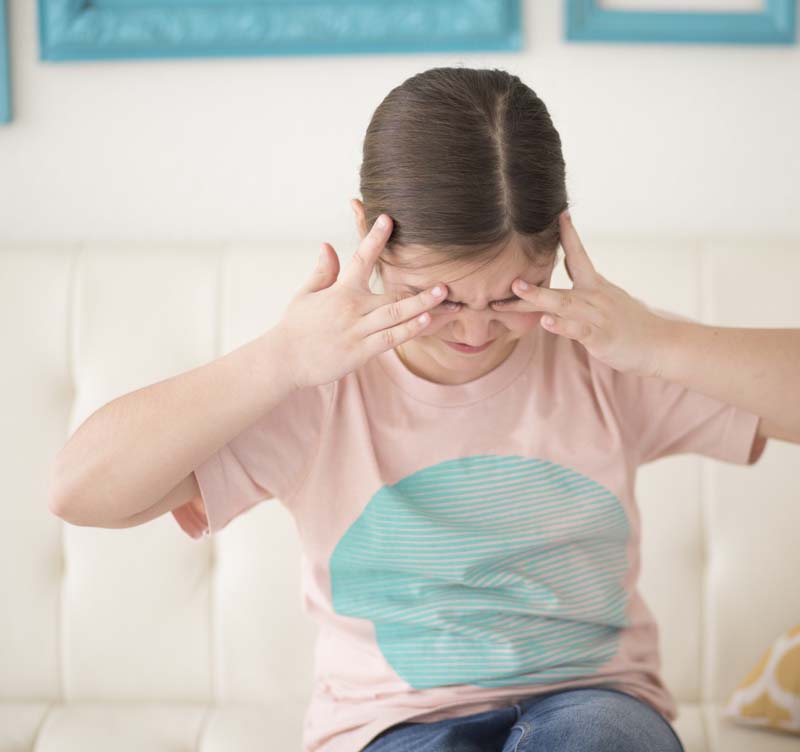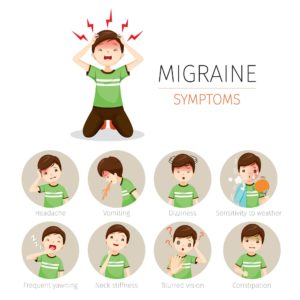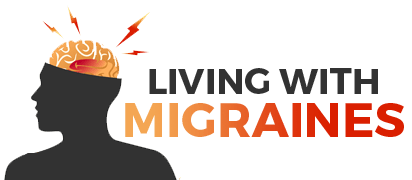
If we suspect that our child suffers from migraines, or if we are caring for someone who may be suffering from migraines, we have to take it seriously.
The task can be challenging for a number of reasons. Migraines in children are not easily determined, even if usual symptoms are there. As migraine sufferers, we can normally indicate the relative pain of our own episodes. If our children are not feeling well, we often rely on them to tell us what is going on. Most of us have asked the question: “On a scale of 1 to 10, how bad is the pain?” If your child is older, he or she might provide a somewhat more meaningful answer. But for younger children, this doesn’t work. A child doesn’t know the scale, how to adequately describe the pain, or how to tell what is happening inside their bodies.
Migraines in children can be more common than we think
Our example
As an example, one of our children will sometimes complain of a headache. At times, the headache might accompany a fever, if getting sick. If constipation is a problem, a headache can sometimes be present as well. As parents, we need to keep in mind that we should always be on the lookout for patterns. These patterns are often not easy to detect. Therefore, it is important to keep a written log, noting anything important. This is particularly important if our children start to complain more frequently about headaches. As we all know, it might not be anything or it might be serious.

But dismissing the headaches should be the absolute last thing we do. Doctors can sometimes be too quick to dismiss migraines in children as symptoms of simply growing. That can be a disaster, especially if there is something more serious going on.
By maintaining detailed records, we as parents will be in a position to describe specific symptoms to a doctor, in addition to everything that has occurred up to this point, without missing important pieces of information.
Dismissing symptoms and not listening – a case study in what migraine sufferers often go through

In one particular case, our child complained of a headache and had also developed a rash around the hands and upper arms. As time went on, the symptoms were getting worse. We took pictures and sent them to our pediatrician who thought it best to schedule an appointment to make sure it was nothing serious. During the appointment, the pediatrician explained that headaches in children can be a normal part of growing. The pediatrician went on to say that the pain could also be a sign that our child was not drinking enough water. Since the pediatrician did not believe the rash to be serious, he offered a somewhat strange solution. We were told to rub a mix of lavender oil on the hands and arms. When I again asked about the reason for the headaches, the answer came back “It’s hard to say; it could be something in the air, specific allergies, or not enough water.”
Migraines in children are common according to research
Roughly ten percent of school-age children suffer from migraines [1]. According to the Migraine Research Foundation, children have a 50% chance of inheriting migraines if one parent suffers from migraines. Worse yet, if both parents suffer from migraines, the percentage increases to 75%.When I mentioned my own migraines, the doctor seemed to ignore the potential for the migraines to be inherited. When I then followed up by asking whether it could be a reaction to something in the diet, and whether it made sense to limit some foods, the response was that we might possibly end up removing some important things from the diet that need not be.
Let’s think about this. The pediatrician couldn’t tell why the symptoms were occurring but we should apply something that might or might not treat the condition that couldn’t be identified. If this seems familiar to you as a migraine sufferer, it should.
In the car on our way back home, we agreed not to apply any oils at this stage. Instead, we would take a few weeks to limit our child’s diet. Within only a few days of doing so, the skin condition had already started to improve. The headaches had disappeared and it turned out that our child had extreme food sensitivity to eggs. Many foods, including those high in tyramine and other biogenic amines, can be serious migraine triggers.
Paying attention is at least half the battle in diagnosing migraines in children
Diagnosing possible migraines in children starts with paying attention. As parents, there is a lot that can be done by simply doing so. The pediatrician is not there with us every day, and is therefore left to make a determination based on sometimes only fifteen to twenty minutes of interaction with the child. By observing and taking careful notes, we are able to not only determine patterns, but we can also relay better information, should the need arise.
Ask questions in a way that can provide clarity
It is also important to be careful when asking leading questions, like: “does your tummy hurt”, “do you feel like you want to throw up”, or “does your head hurt”? What does it feel like when the head hurts? If you bump your head against the wall, it hurts, but it is not the same thing. The questions might incorrectly lead the child to respond in the affirmative. Children will also sometimes answer in the affirmative because that is what we expect.
More specific questions to ferret out what might be going on can be more helpful, such as:
- Does the pain increase, decrease, or stay the same when you lay down?
- What about when you shut your eyes?
- If you shake your head, does the pain increase, decrease, or stay the same?
- Where do you feel the pain; right side, left side, front, rear?
- Is the pain throbbing? Indicating this by lightly pounding the table in an even pattern could be helpful in illustrating.
Whatever questions you ask, try to relate it to something the child understands. Depending on these questions, we would then note whether the throbbing pain tends to occur more frequently towards the front of either side, since this could be a clear sign of a migraine.
Conclusion
Diagnosing migraines in children starts with paying attention. Take notes often, ask relevant questions, and don’t be afraid to pry when doctors give you non-sensical answers. A little skepticism can go a long way when doctors appear not to listen, instead brushing away symptoms with general statements.
[1] Migraine in kids is not just a bad headache., Migraine Research Foundation, https://migraineresearchfoundation.org/about-migraine/migraine-in-kids-and-teens/
